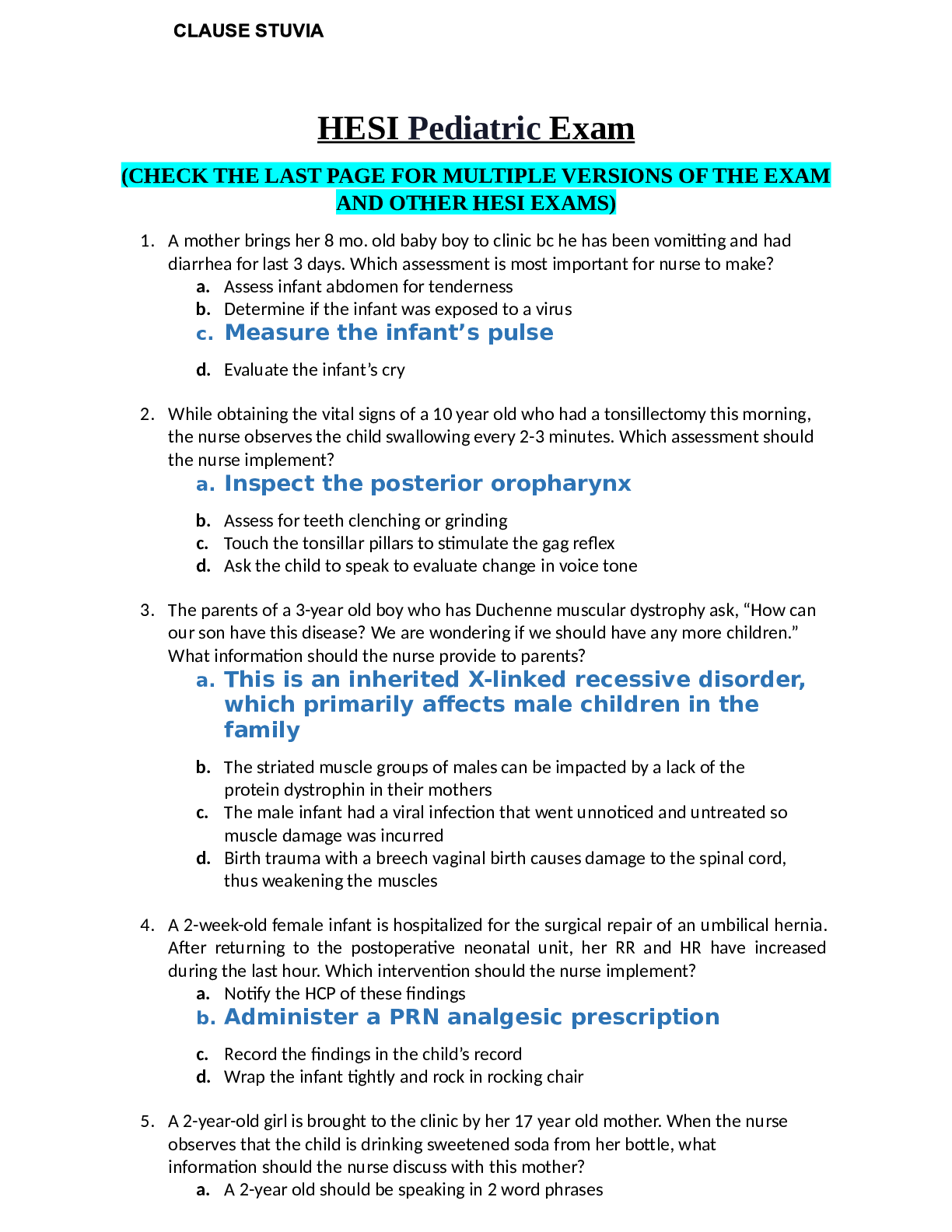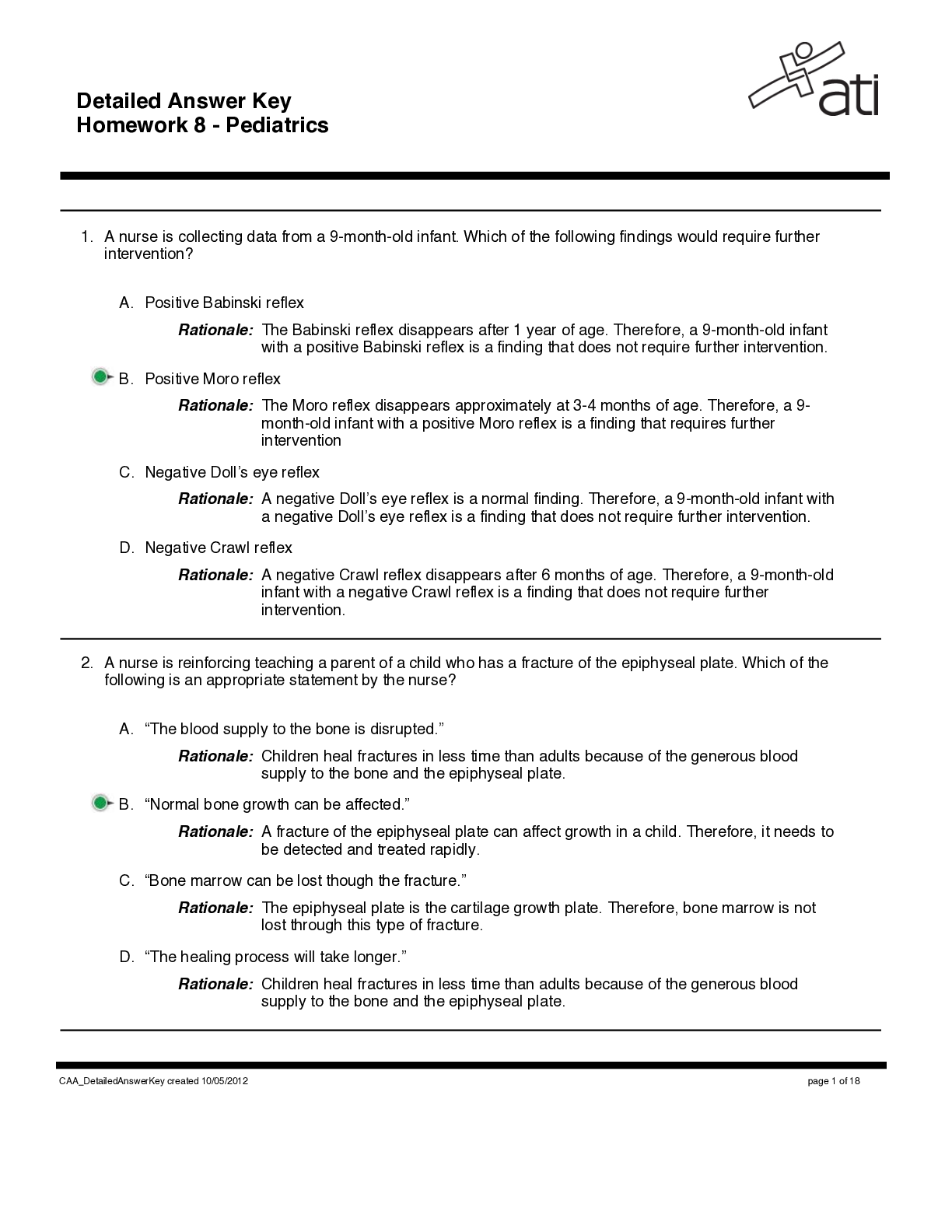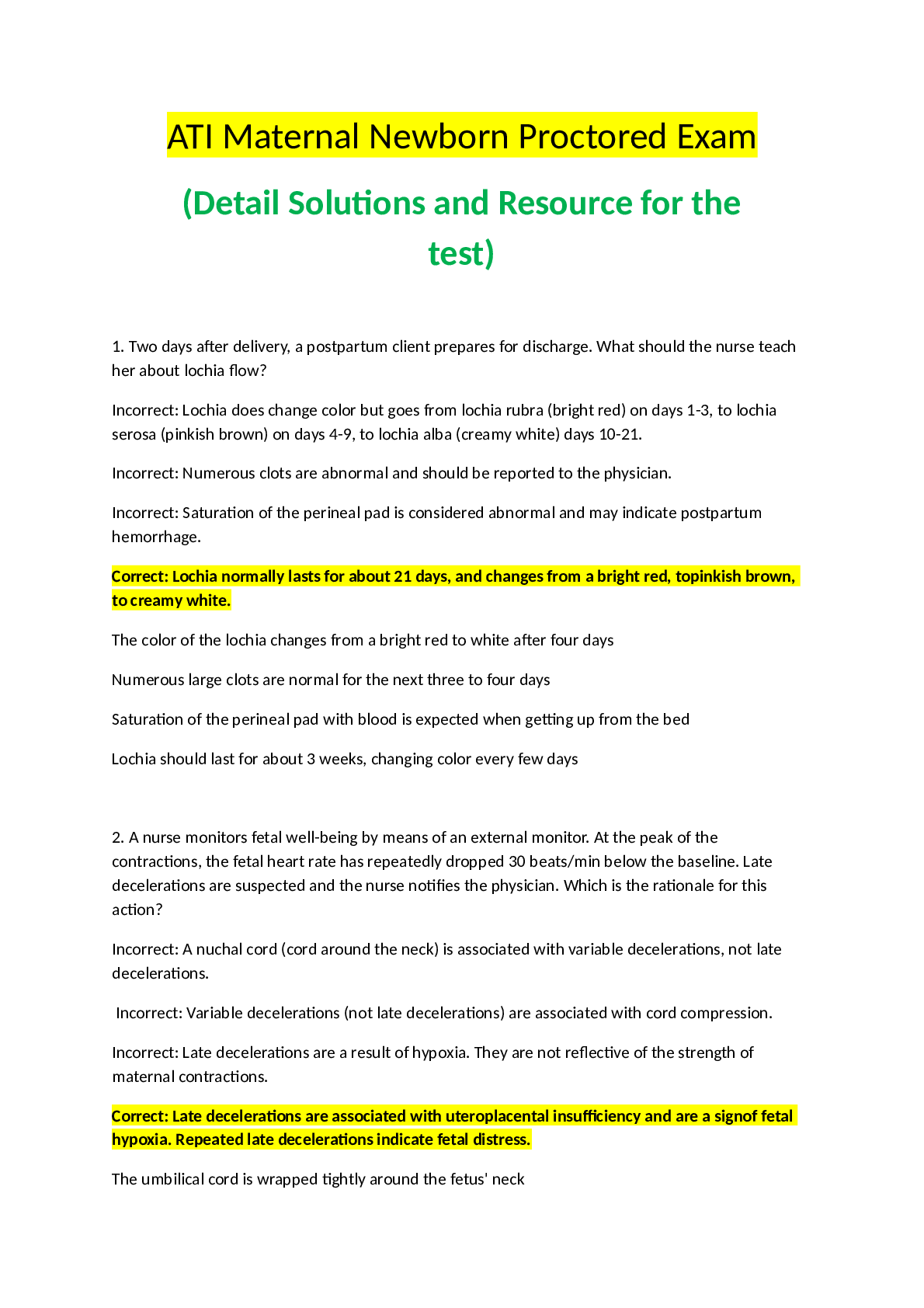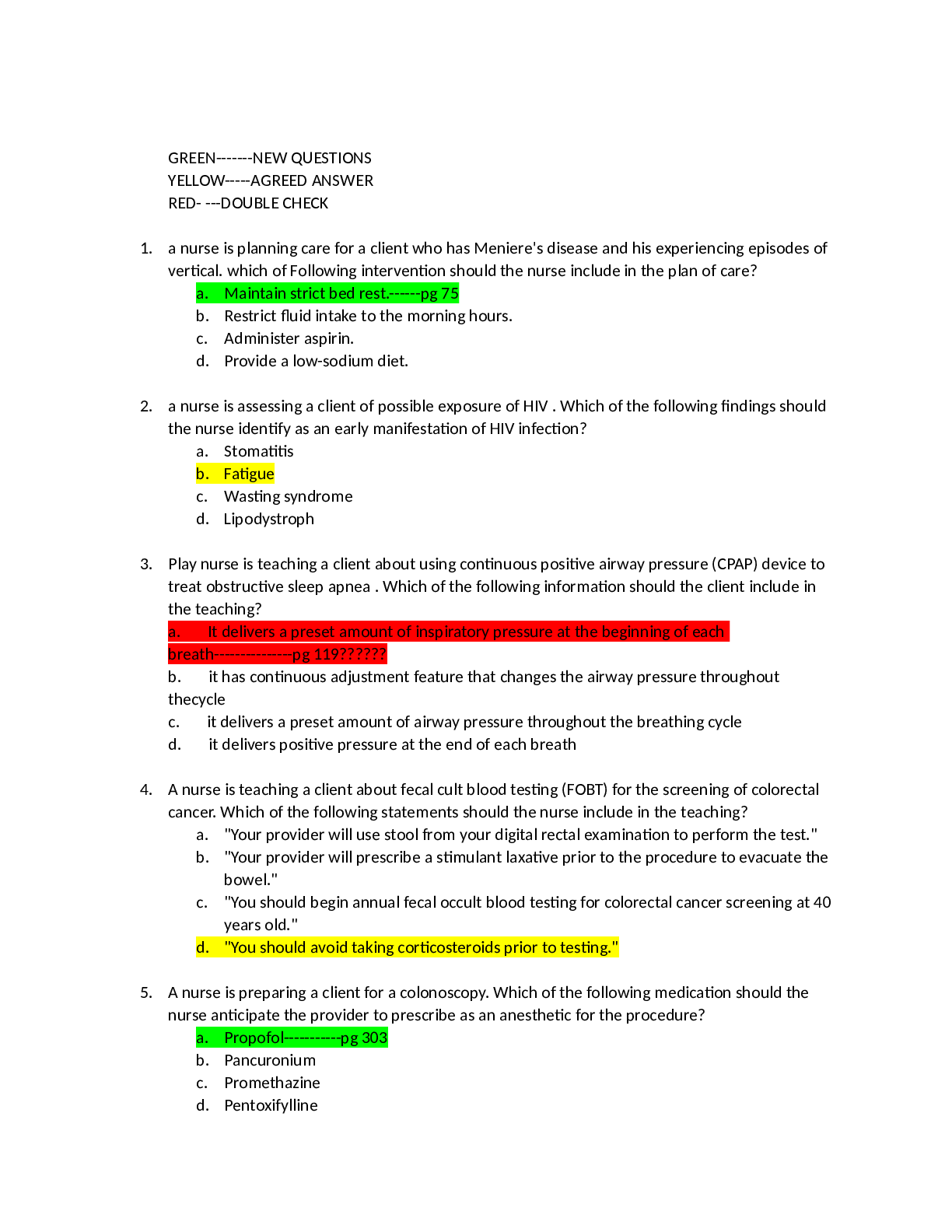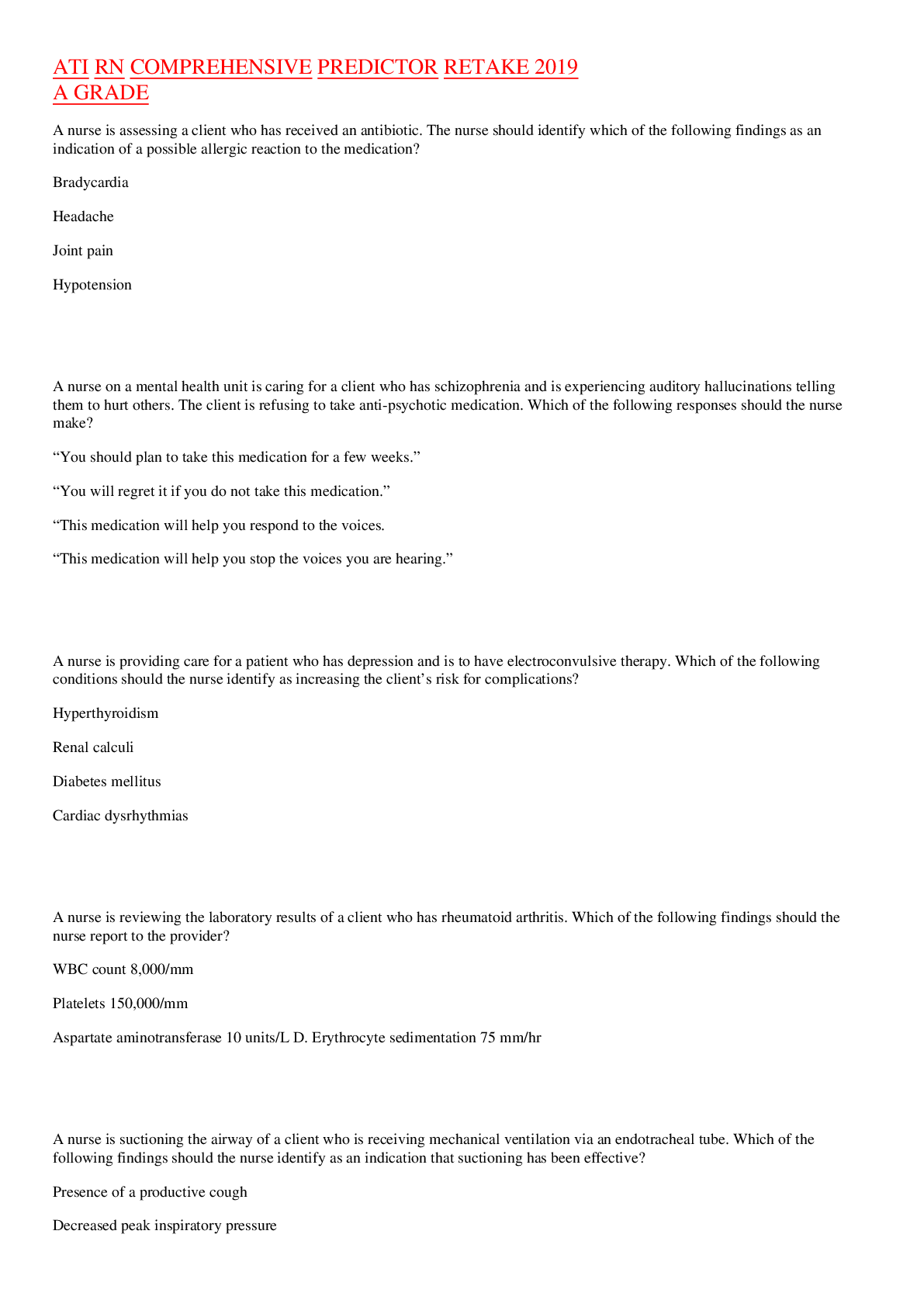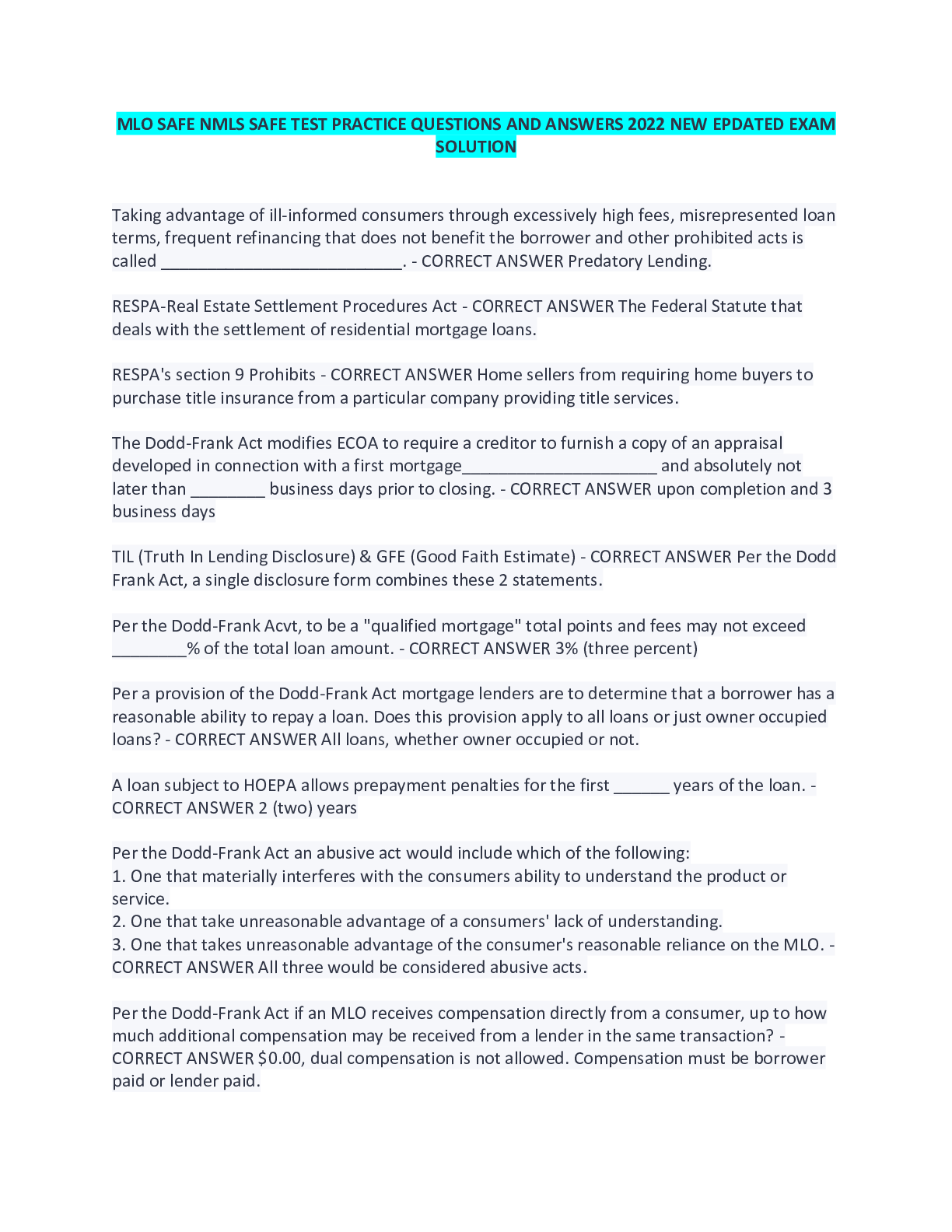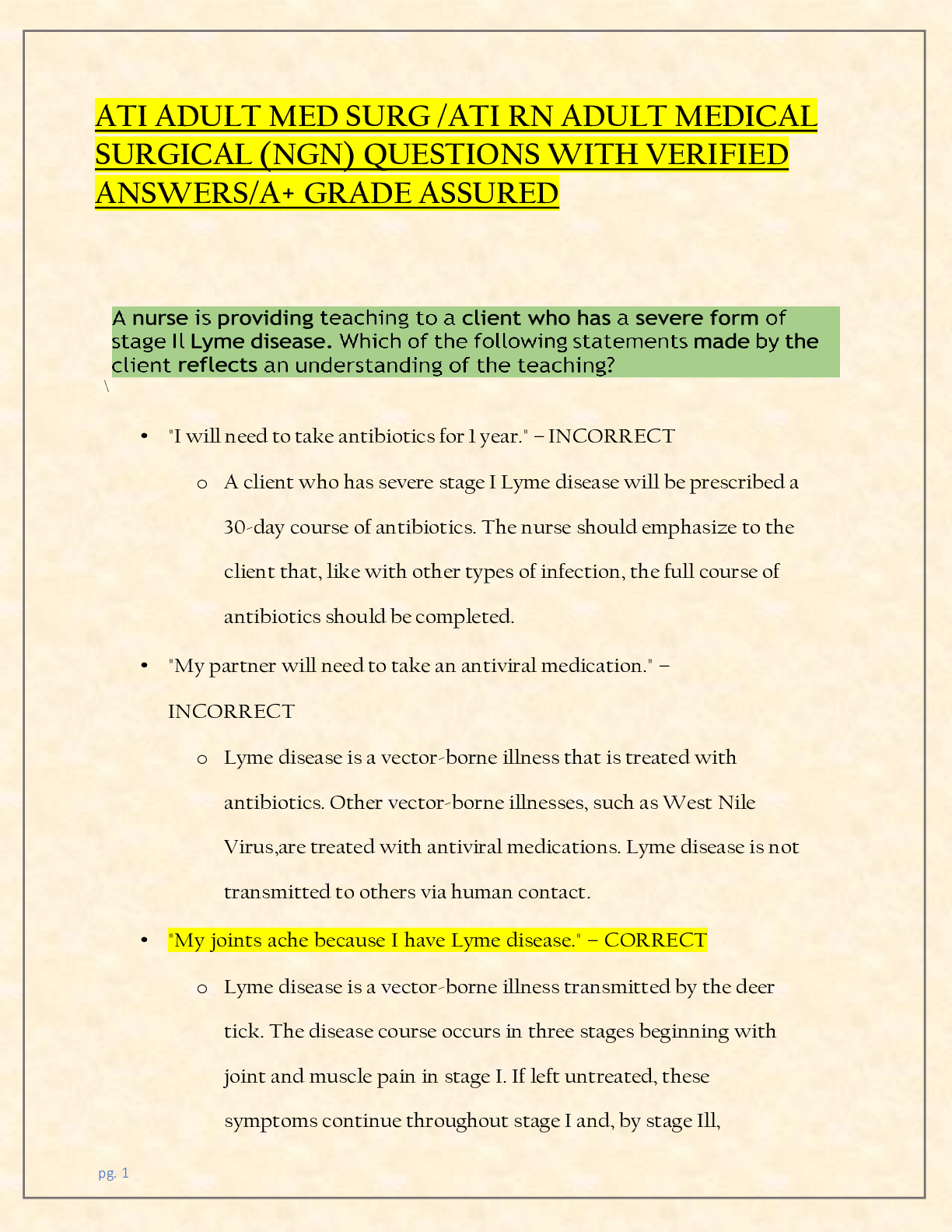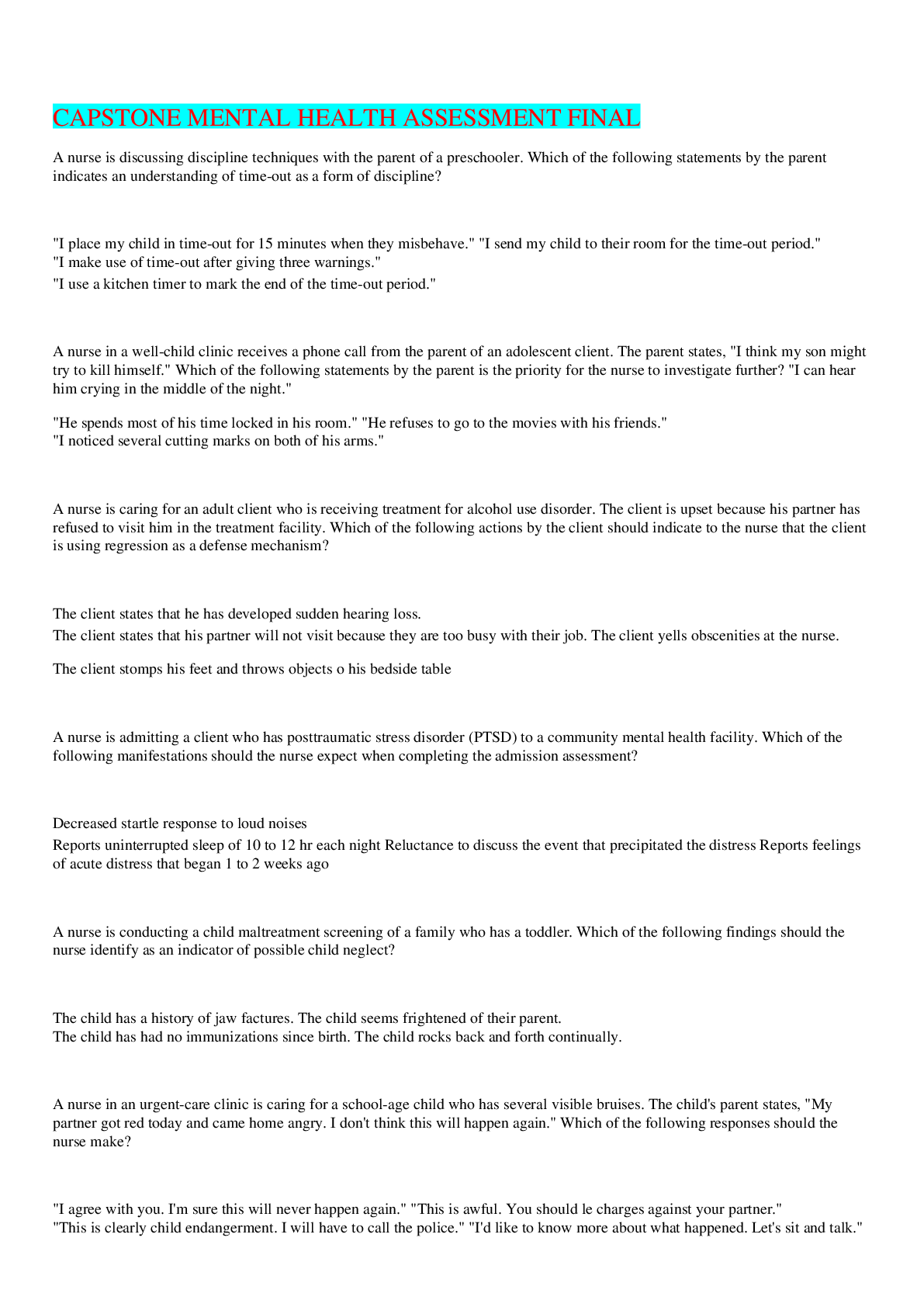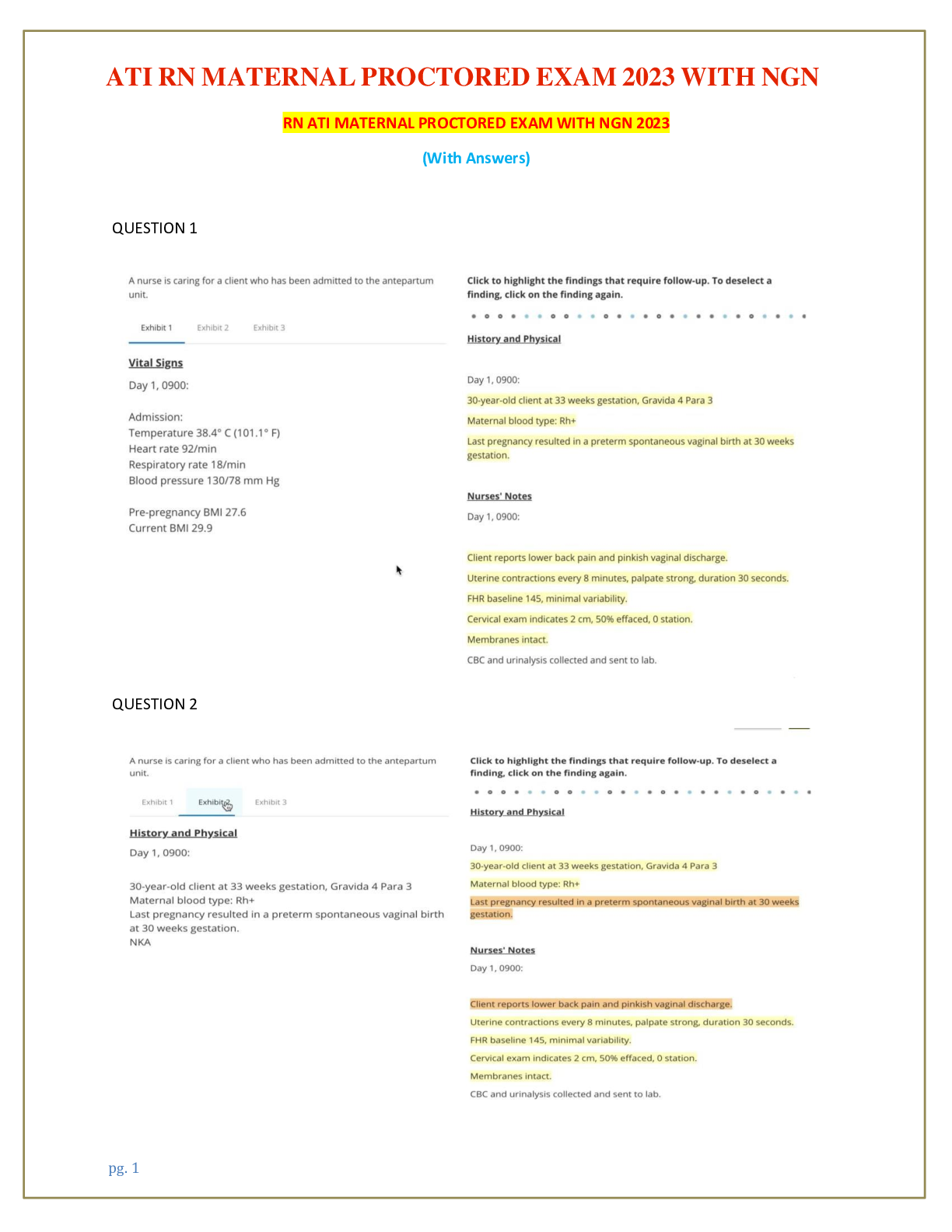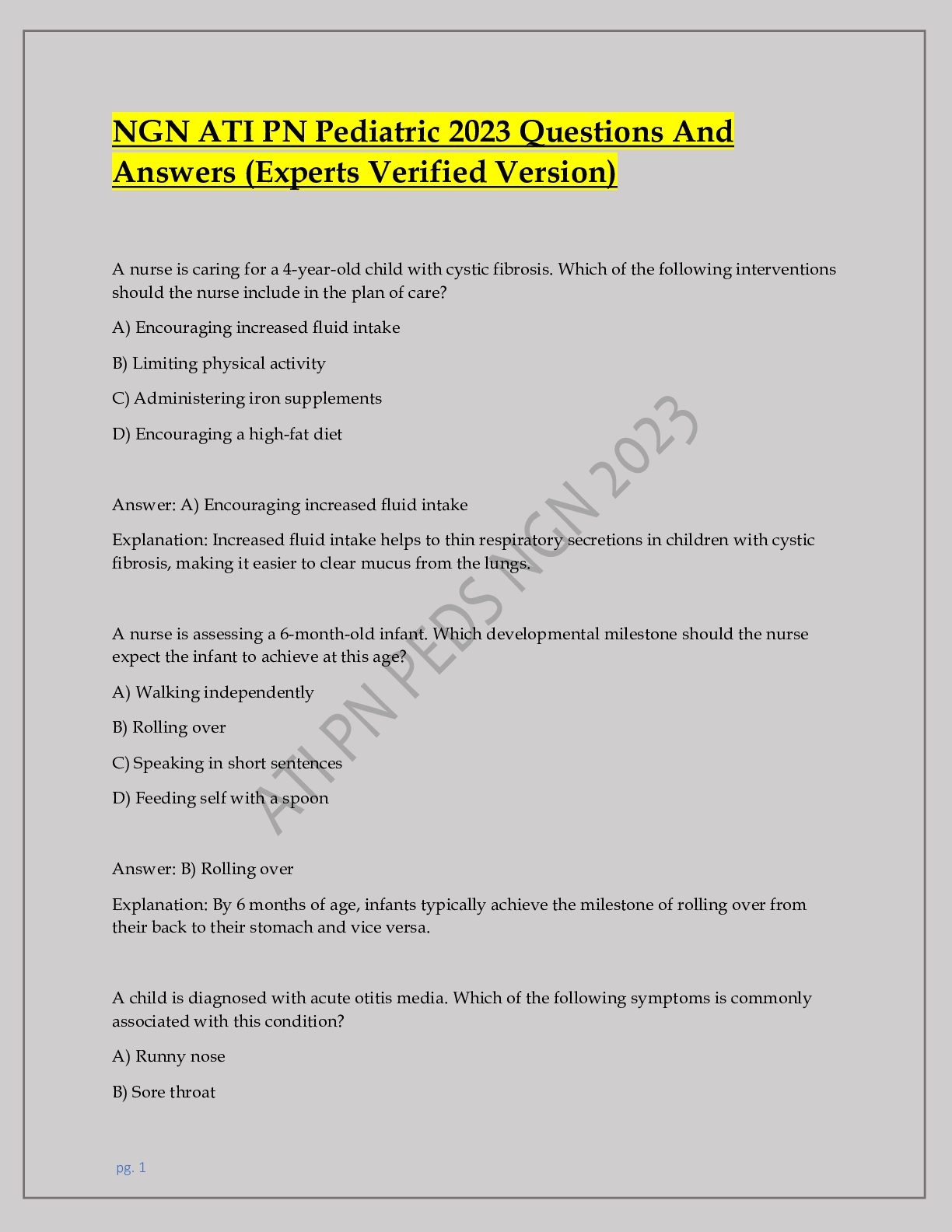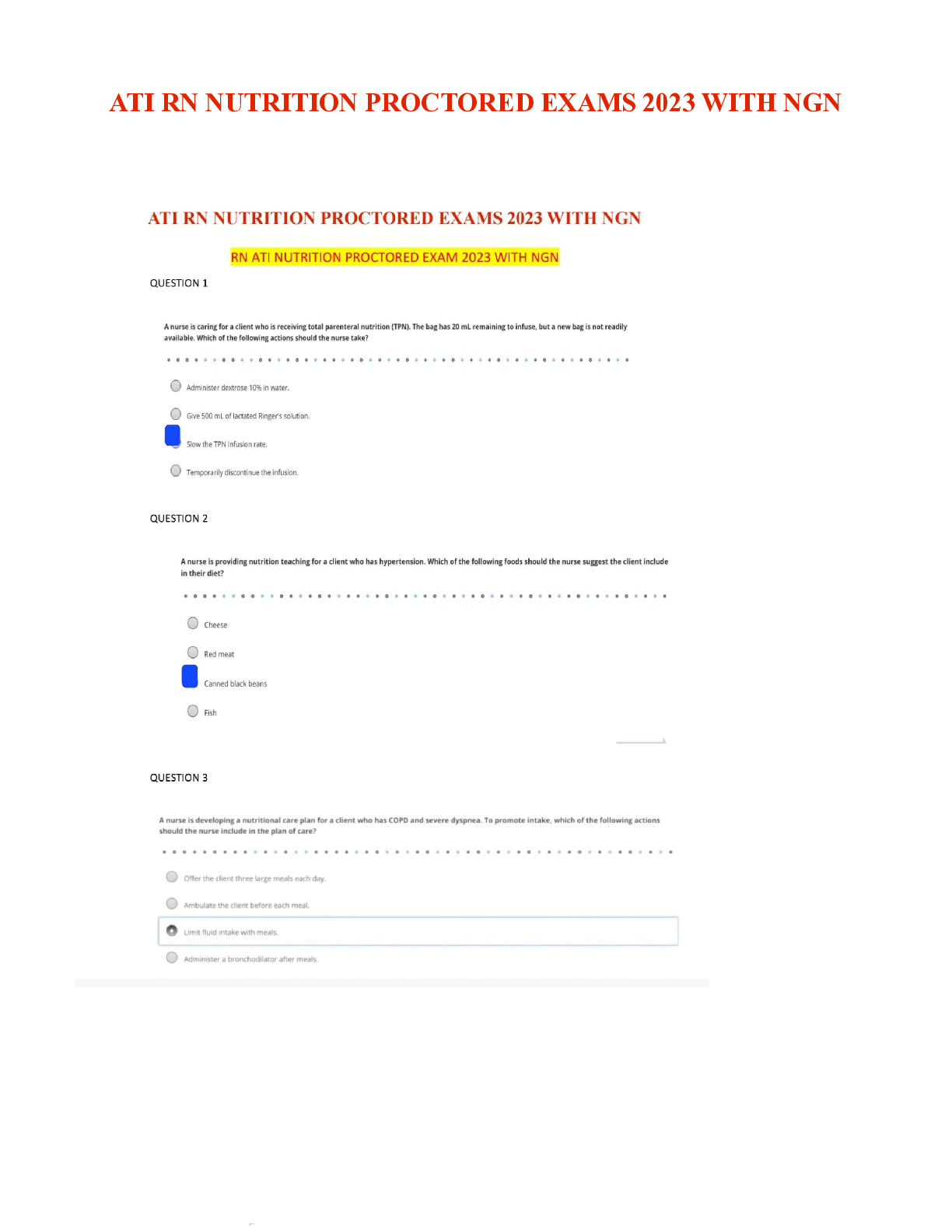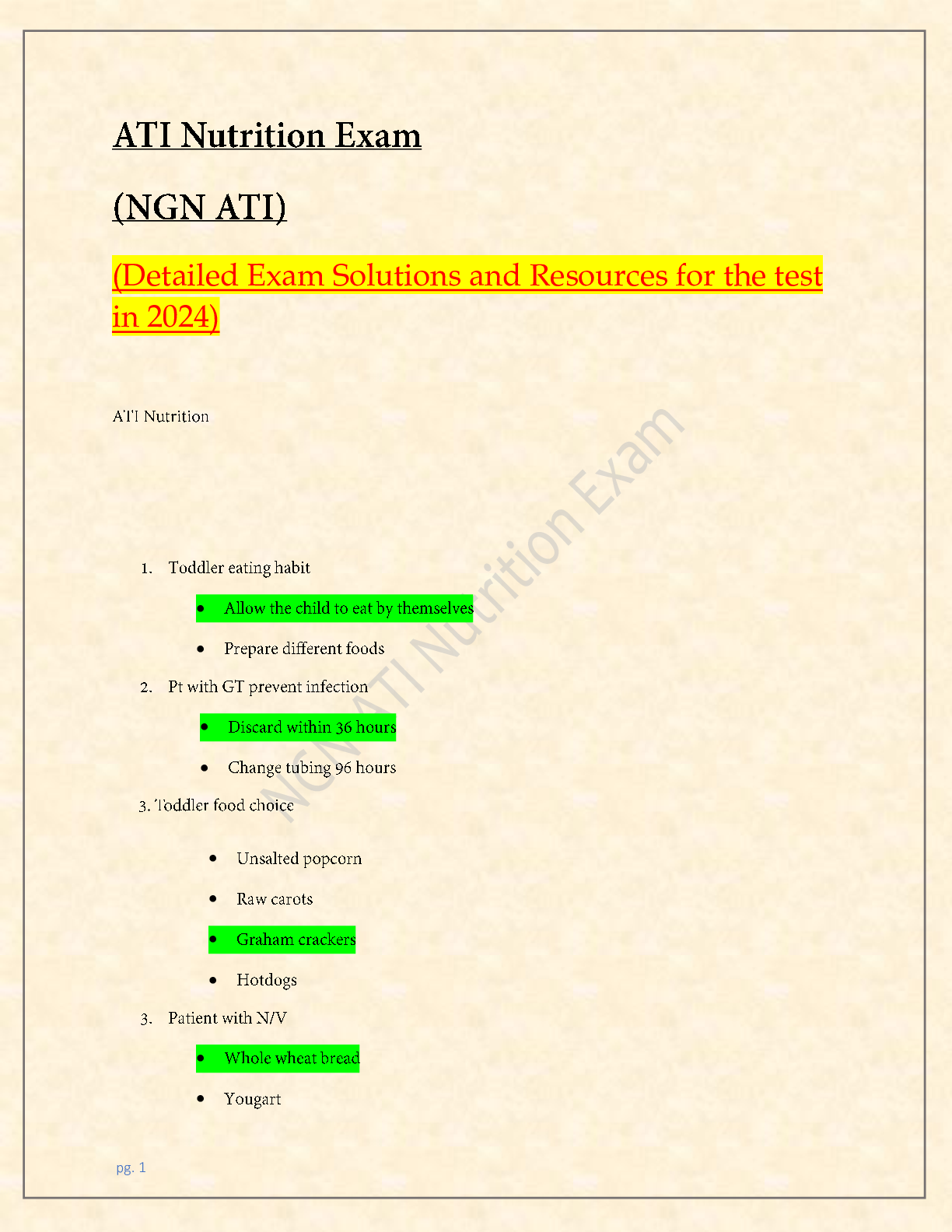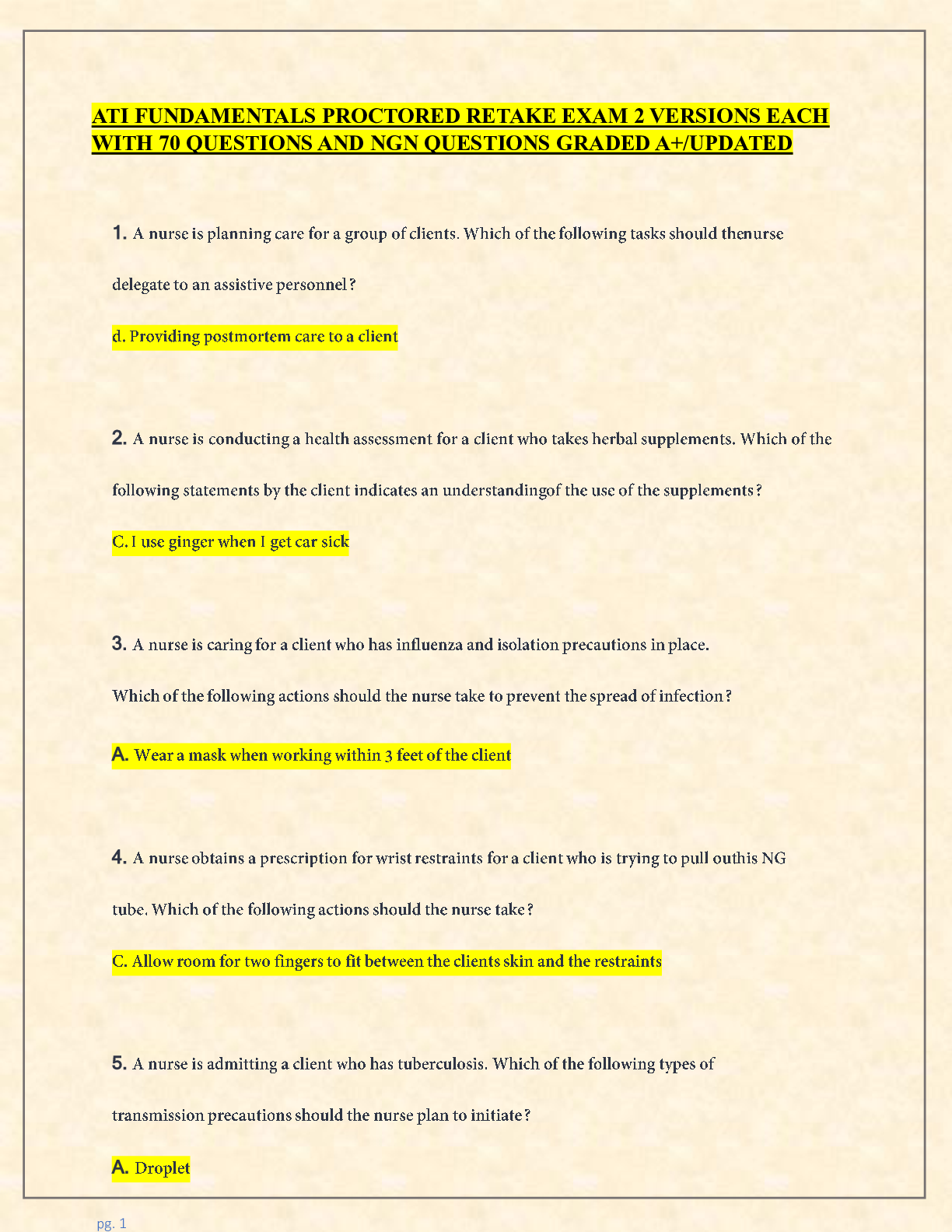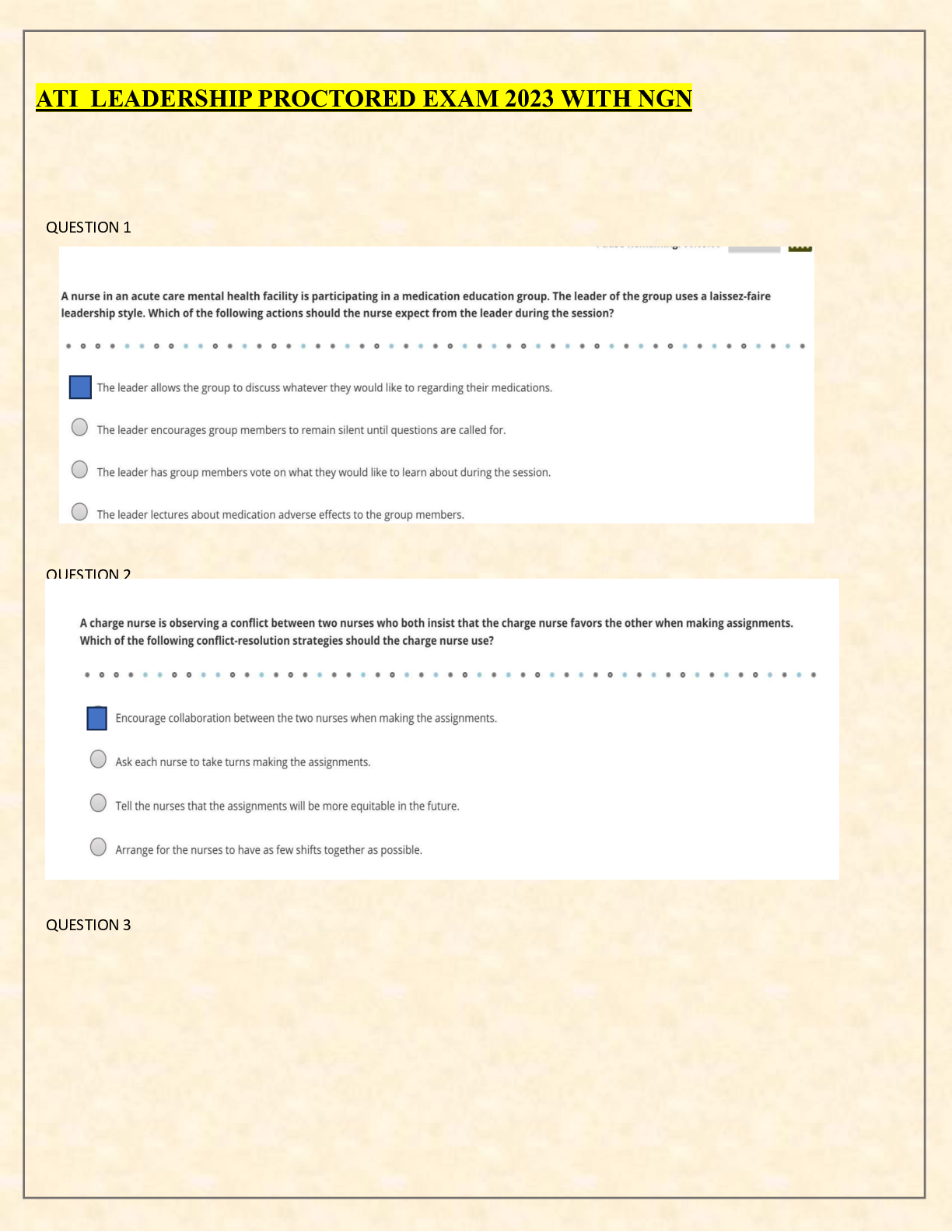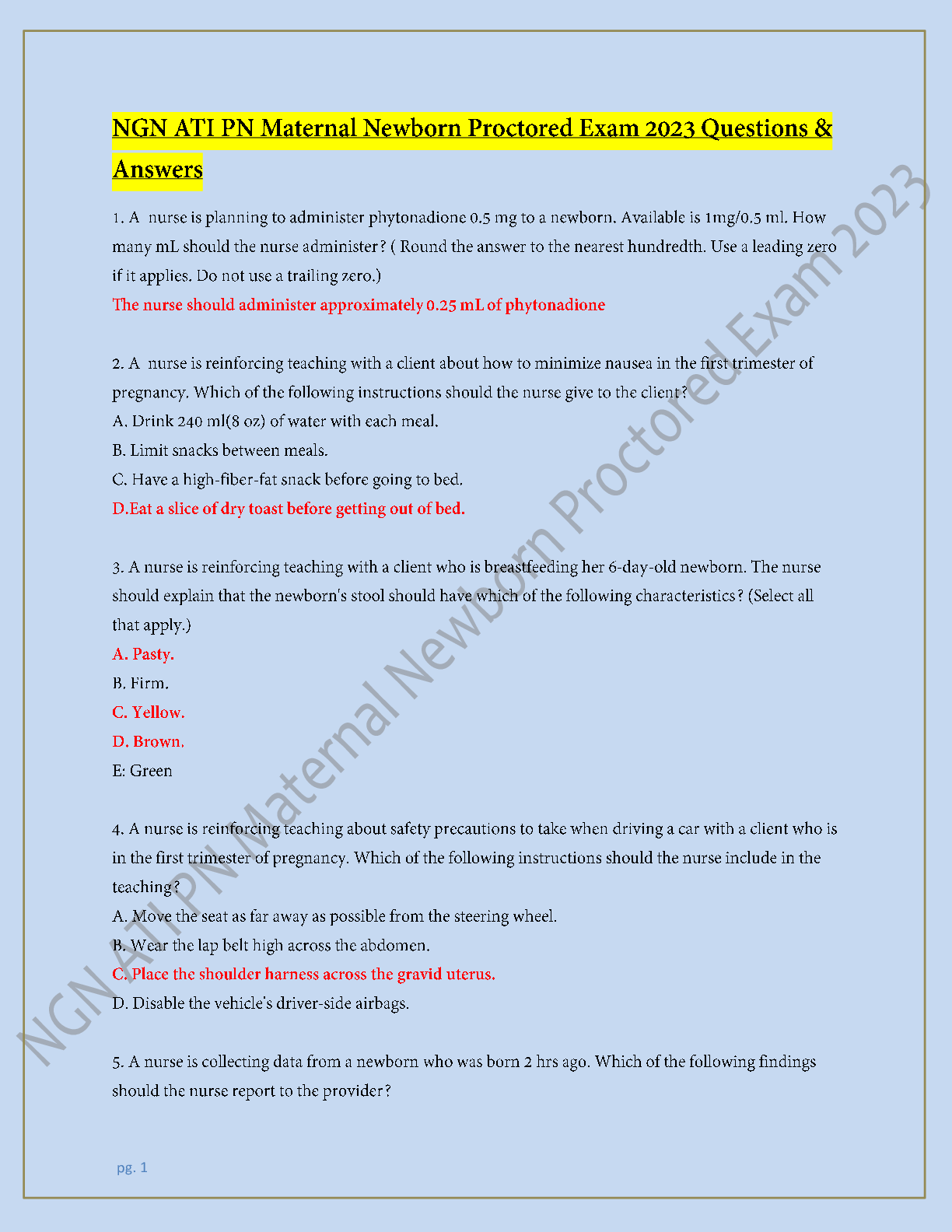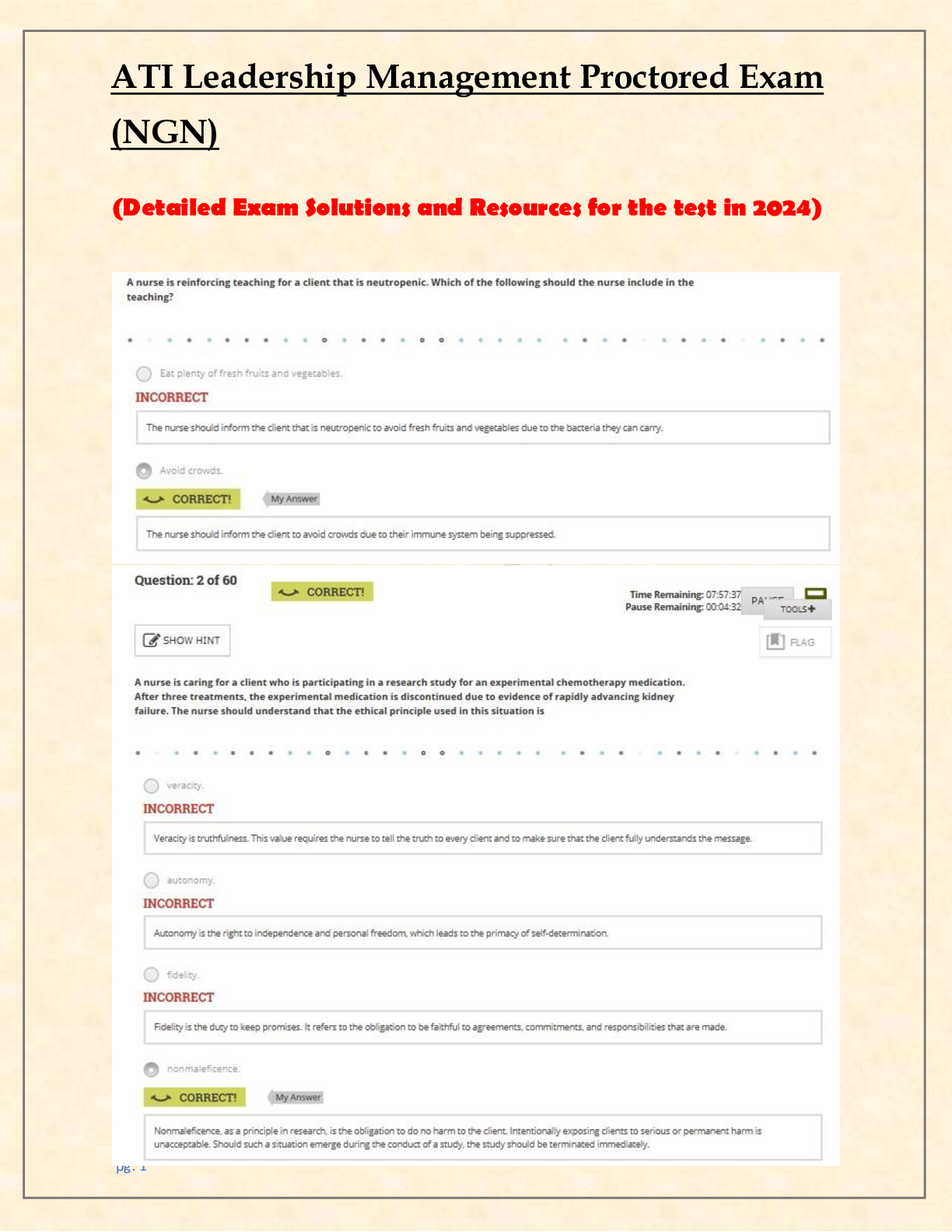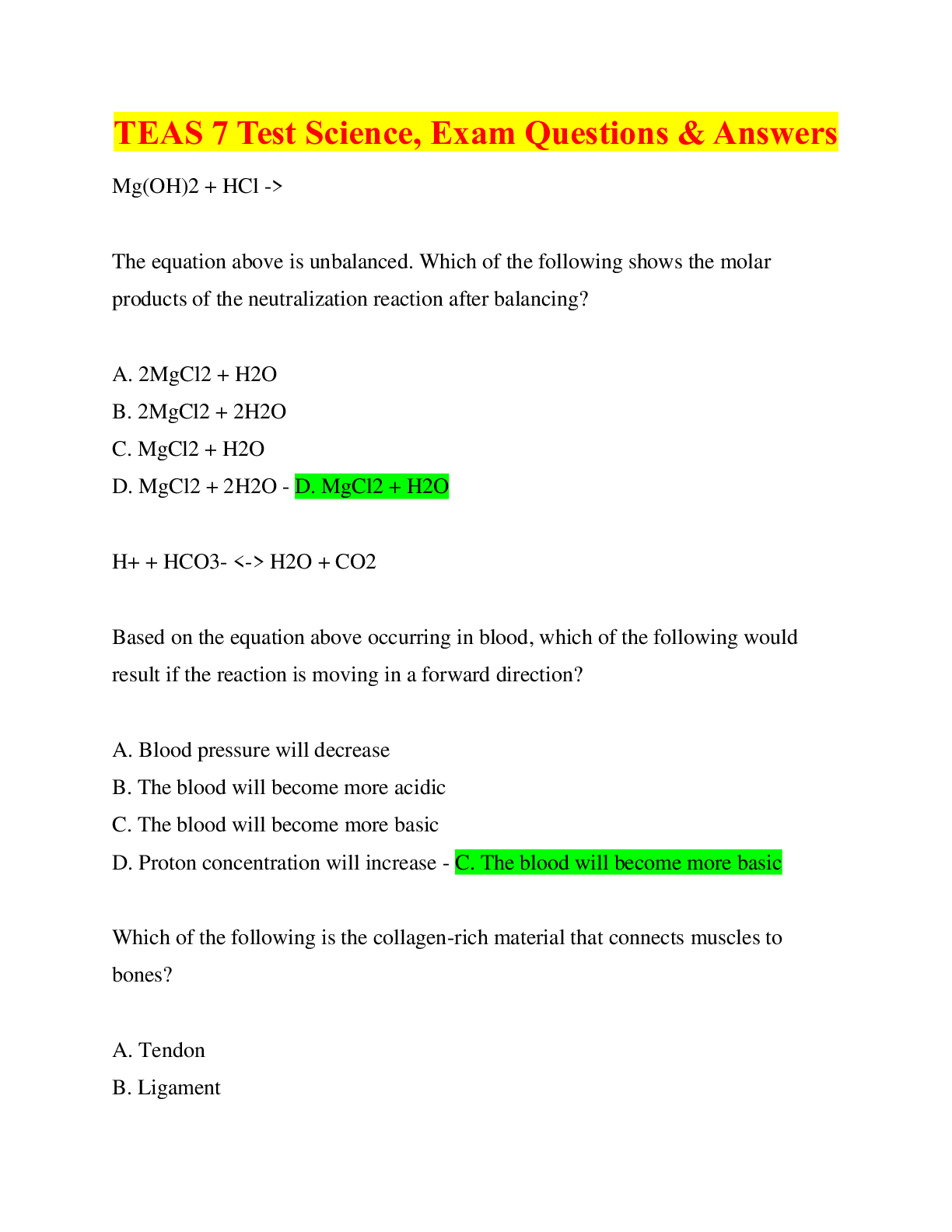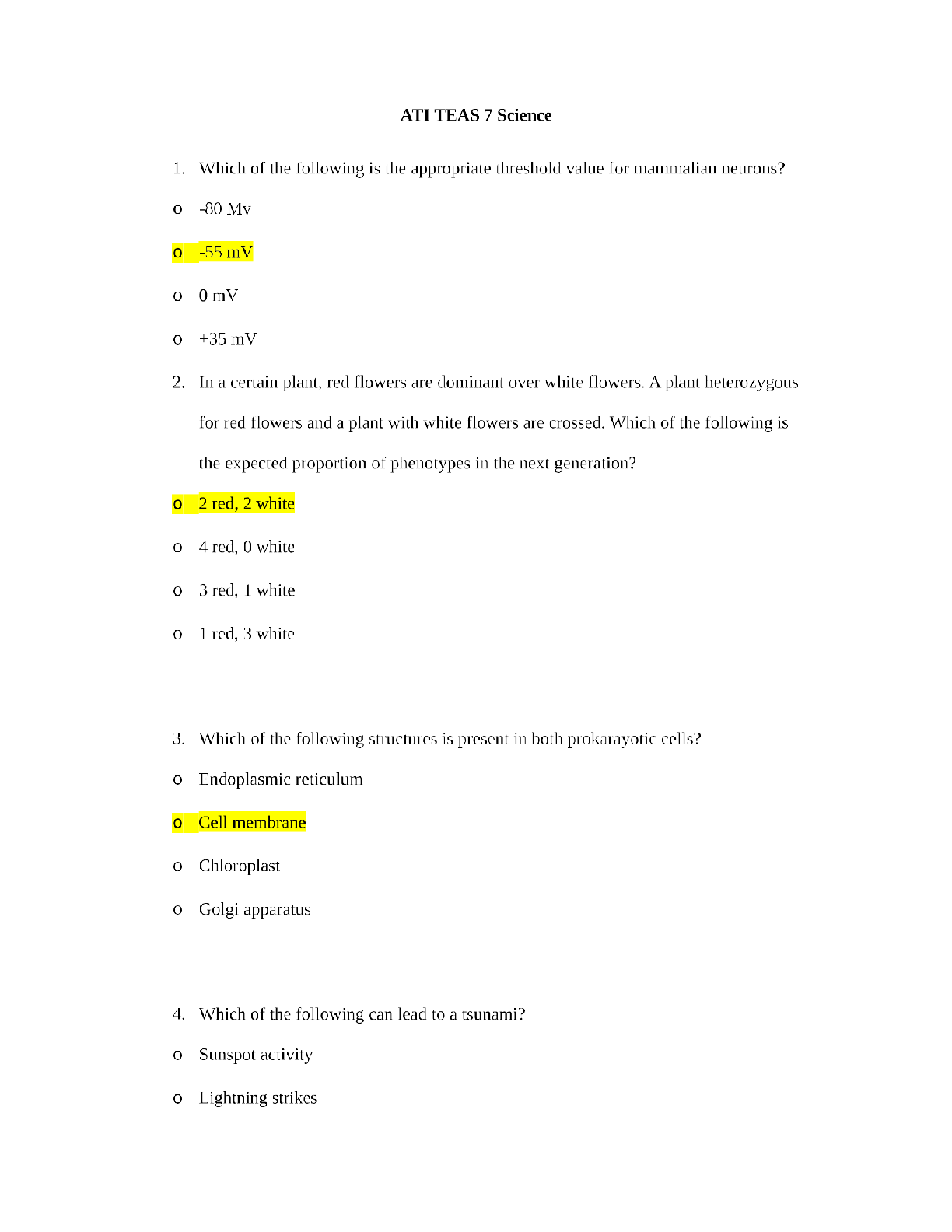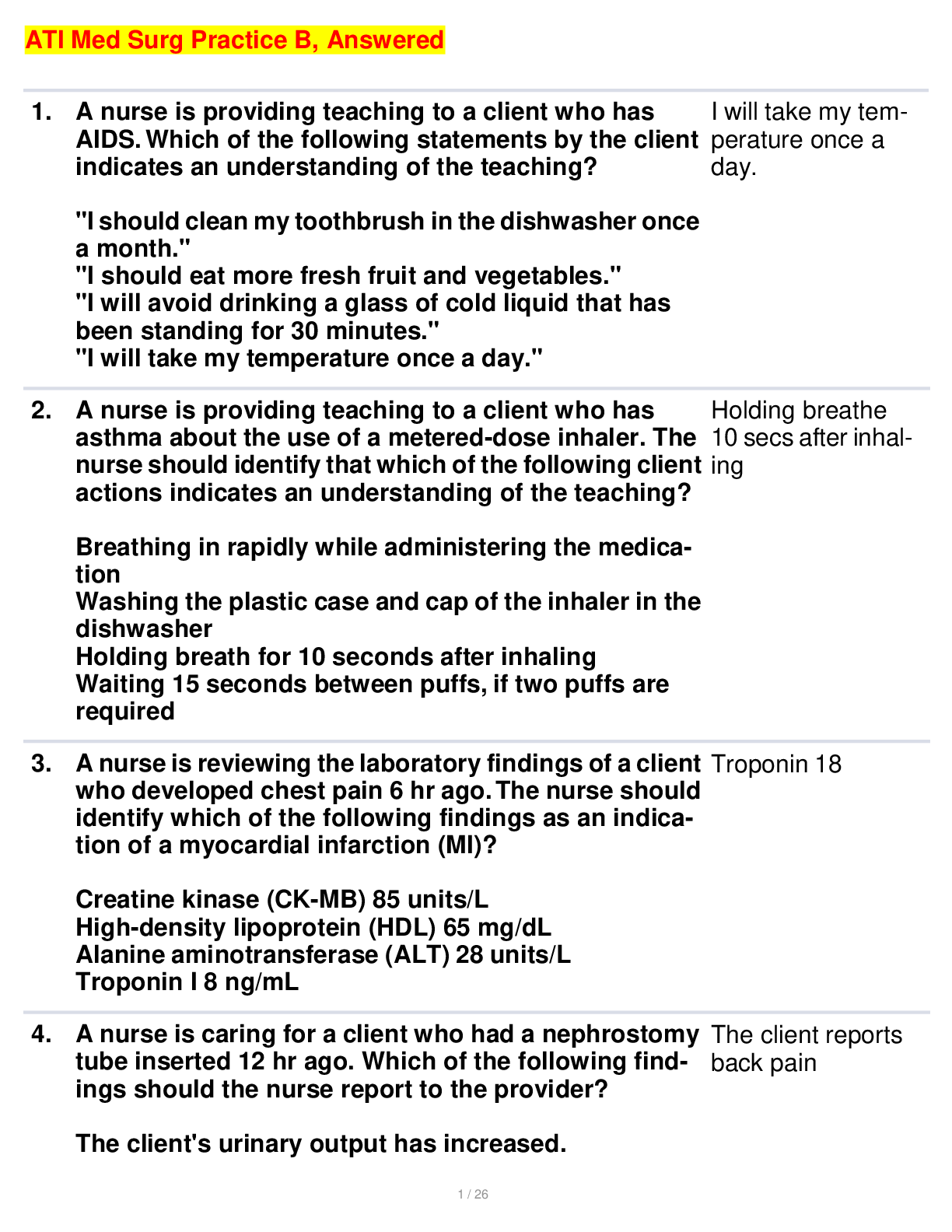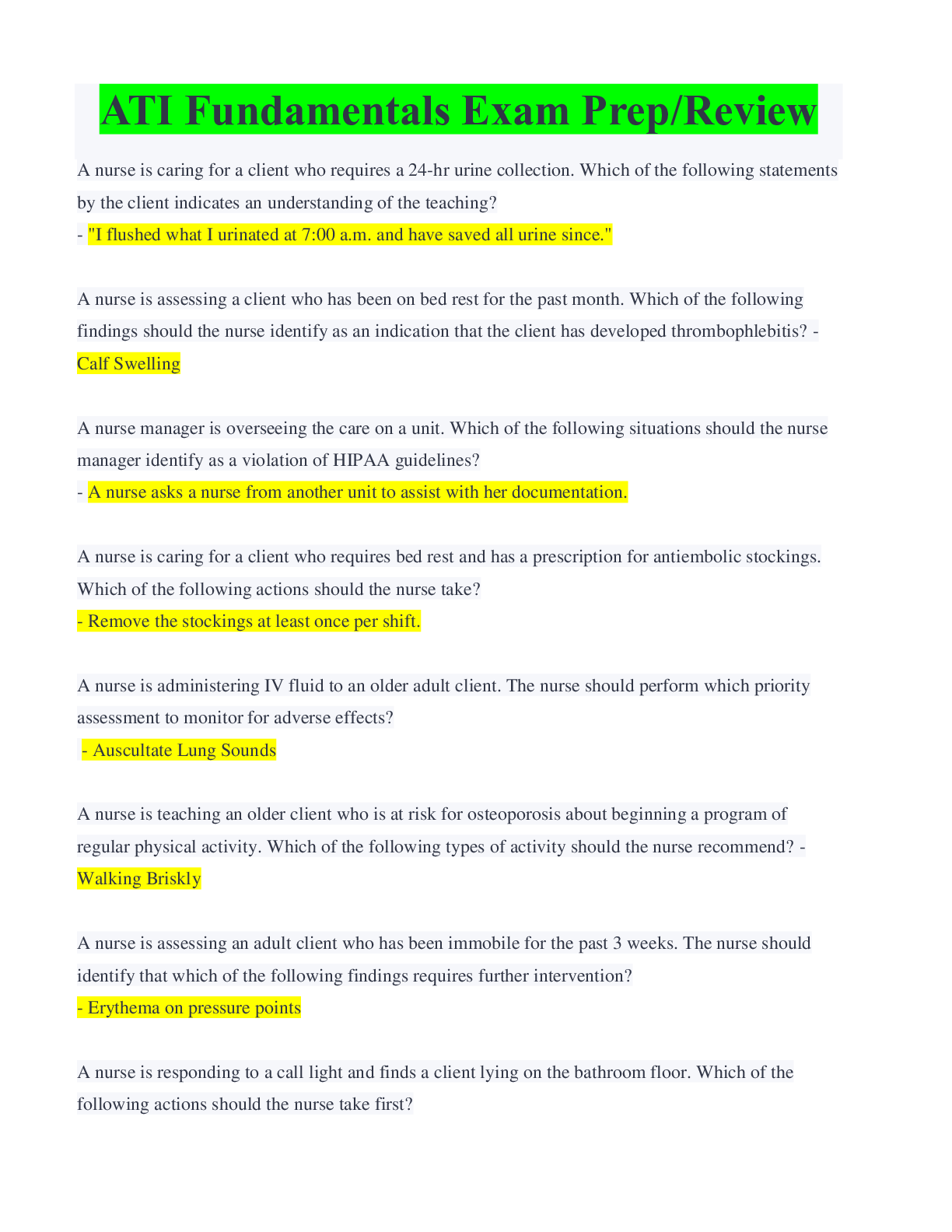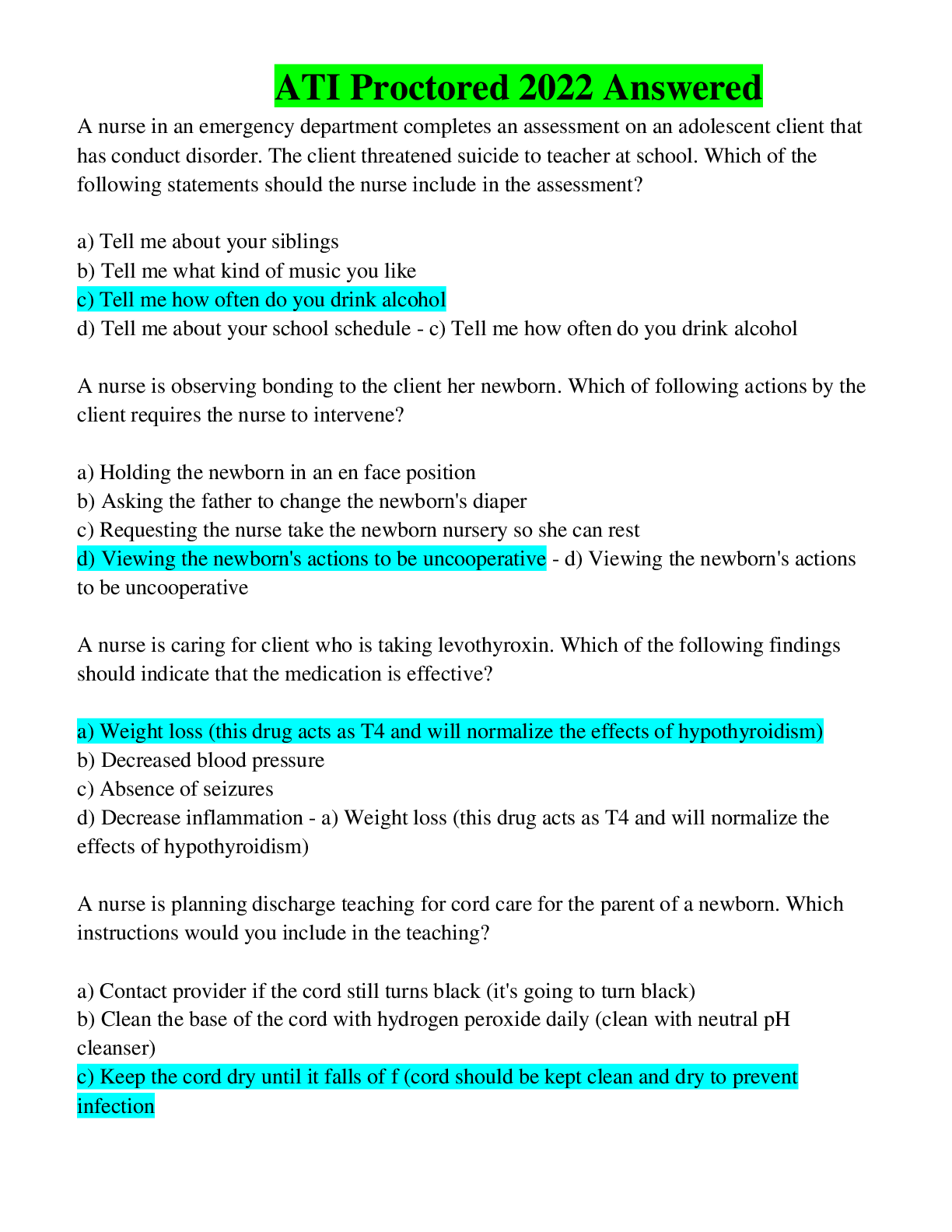ATI Gerontology Final Quiz 2020.
Document Content and Description Below
A nurse is completing medication reconciliation for an older adult client who is receiving multiple medications. Which of the following actions should the nurse take first? A- Clarify the client li... st of medications with the pharmacist B- compare the current list against the new medication prescriptions C- investigate any discrepancies on that list D- ask the client about over the counter medications she is taking Answer- D The nurse should apply the nursing process priority-setting framework. The nurse can use the nursing process to plan client care and prioritize nursing actions. Each step of the nursing process builds on the previous step, beginning with assessment or data collection. Before the nurse can formulate a plan of action, implement a nursing intervention, or notify the provider of a change in the client’s status, she must first collect adequate data from the client. Assessing or collecting additional data will provide the nurse with knowledge to make an appropriate decision. When performing medication reconciliation, it is important that the nurse collect a list of all the medications the client takes in order to compare the full list of medications against any new medications the client will take. The list should include prescriptions, over-the-counter medications, and herbal and nutritional supplements. A- The nurse should clarify the client’s list of medications with the pharmacist, caregivers, providers, and the client; however, this is not the first action the nurse should take. B- The nurse should compare the medication list against any new prescriptions to ensure there is not any duplication of medications or potential medication interactions; however, this is not the first action the nurse should take. C- The nurse should investigate discrepancies on the list with the provider to prevent medication errors; however, this is not the first action the nurse should take. Exam 1? A nurse at a long-term care facility is planning care for a client who has Alzheimer's disease and wanders at night. Which of the following interventions should the nurse include in the plan? A- Place the client in wrist restraints at night B- request a prescription for a psychotropic medication C- assign the client to a room closer to the nurses station D- cheap the television on at night Answer- C The nurse should place the client who wanders in a room that allows for close observation. The nurse should provide clients who wander a safe place to walk and supervision when the client is ambulating. This study source was downloaded by 100000840275362 from CourseHero.com on 04-30-2022 13:31:36 GMT -05:00 https://www.coursehero.com/file/69167324/ATI-Gerontology-Final-Quiz-2020docx/ A- The nurse should protect the client from harm, but restraints can result in agitation. B- The nurse can administer a psychotropic medication to treat depression or emotional manifestations of Alzheimer’s disease, but not to treat wandering behaviors. D- The nurse should avoid the use of excessive light and sound stimulation for the client who has Alzheimer’s disease. This can cause further agitation and confusion for the client. The nurse at a long-term care facility is teaching an older adult client about ambulating with a quad cane. Which of the following statements should the nurse include in the teaching? A- Adjust the height of the cane so that you can flex your elbow at 45 degrees B- hold the cane in the hand on the stronger side of your body C- place the flat side of the cane away from your foot D- the cane and your stronger leg at the same time Answer- b The client should hold the cane with the hand on the stronger side of her body so that she can move the cane to support the weaker leg. This action allows for a more normal gait, with the ipsilateral arm and weaker leg moving at the same time. A- The nurse should instruct the client that the cane’s height should allow the elbow to be slightly flexed. Having a flexion of 45º would make the cane too tall for safe use. C- The client should place the flat edge of the base of the cane facing toward her foot. This allows the client to ambulate without the risk of getting her foot caught in the base of the cane and falling. D- The nurse should instruct the client to move the cane and her weaker leg at the same time. This action allows for a more normal gait with the ipsilateral arm and weaker leg moving at the same time. A nurse is performing a skin assessment for a group of older adult clients. Which of the following findings should the nurse identify as a benign, age related skin change commonly seen in older adult clients? A- Liver spots B- Nevi C- atopic dermatitis D- psoriasis Answer- a Liver spots, also kno [Show More]
Last updated: 1 year ago
Preview 1 out of 8 pages
Instant download

Instant download
Reviews( 0 )
Document information
Connected school, study & course
About the document
Uploaded On
Apr 30, 2022
Number of pages
8
Written in
Additional information
This document has been written for:
Uploaded
Apr 30, 2022
Downloads
0
Views
37

